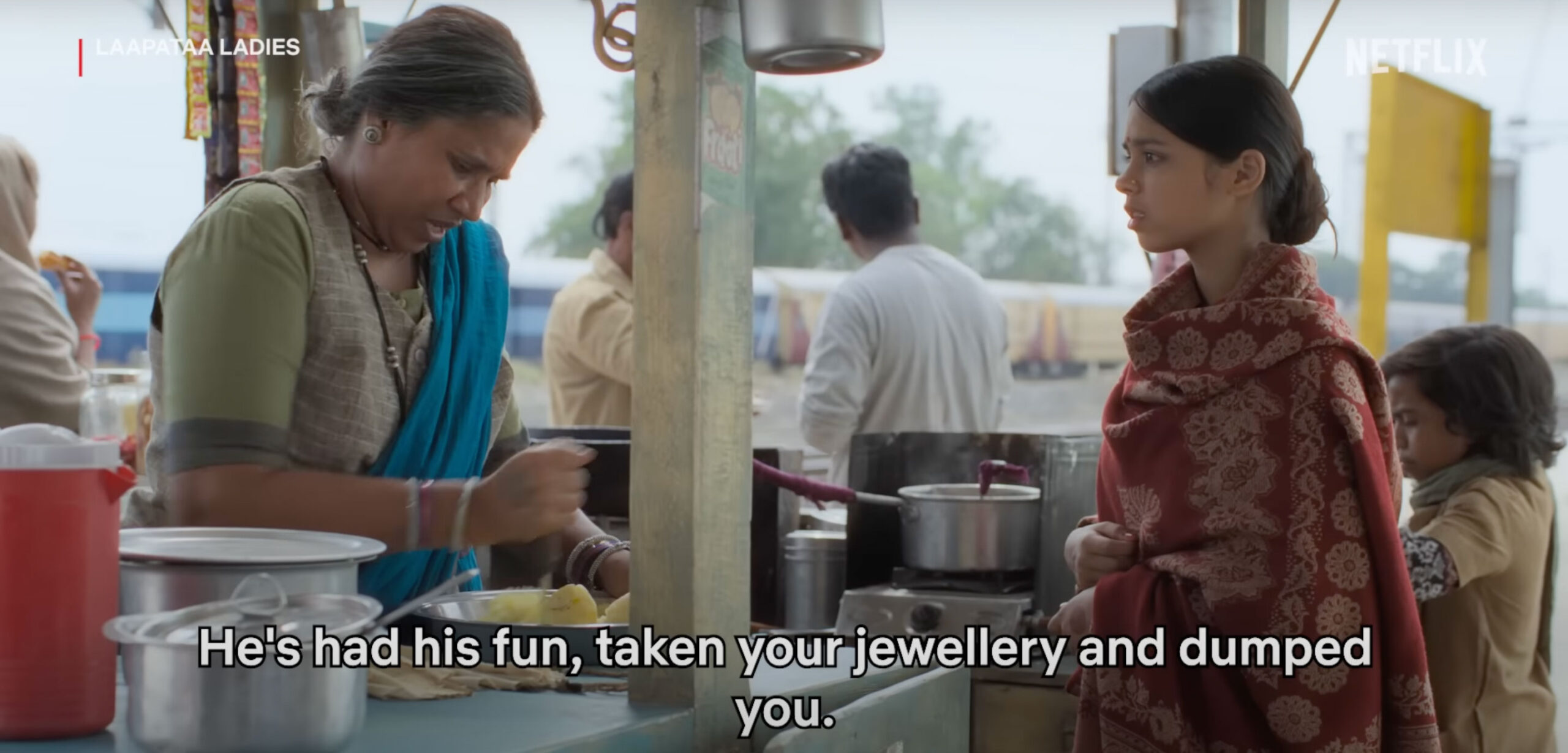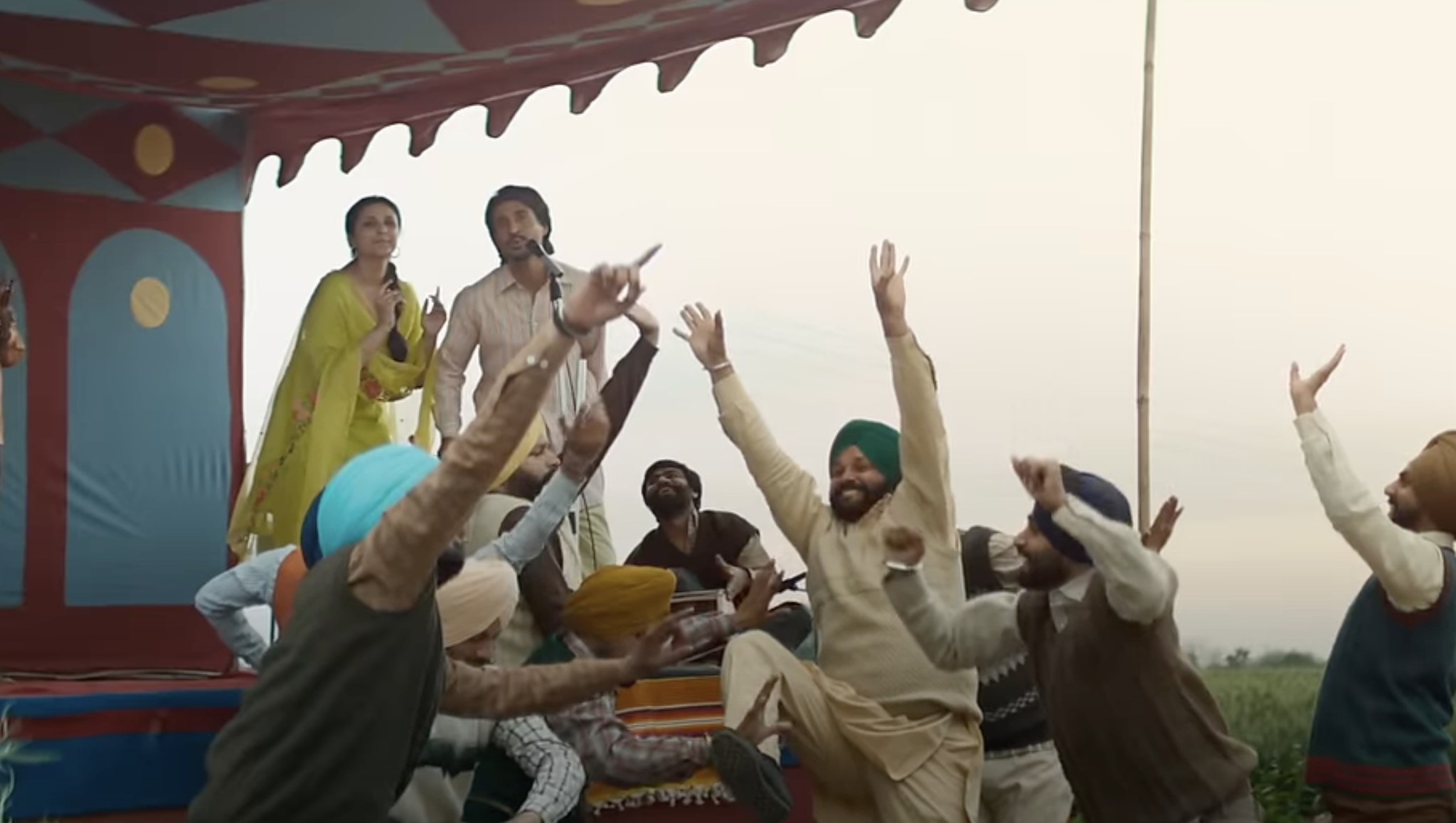In the cinematic landscape of 2023, filmmakers have presented an array of narratives that delve into the complexities of social and familial dynamics. Patriotism, too, is a theme in some of these films, in which soldiers and myths play their part. Then there are biopics, and finally the anti-caste films that bring out the discomfiting truths of our society.
This analysis of the films released in 2023 may inadvertently overlook certain films, the selection being biased towards those that have garnered widespread attention within the Hindi film industry. Additionally, there may be films that have eluded broader recognition, but are nonetheless significant within the context of this discourse.
Part II: Patriotic and mythological films
Films like Pathaan (directed by Siddharth Anand), Jawan (Arun Kumar aka Atlee), Mission Majnu (Shantanu Bagchi) and Tiger 3 (Maneesh Sharma) tap into nationalist sentiment through stories of spies and soldiers; The Vaccine War (directed by Vivek Agnihotri) and The Kerala Story (directed by Sudipto Sen) reinterpret and misinterpret historical developments, lacing them with patriotic undertones. This blend caters to a nationalistic audience seeking heroes and historical validation.
Adipurush (directed by Om Raut) is a retelling of the epic Ramayana. Such retellings reinforce established Brahmanism and the social hierarchies that emanate from it, overlooking diverse perspectives and interpretations from the Dalitbahujan standpoint. There is a discernible bias towards a specific brahmanical hegemonic ideology evident in these films. This bias is reflected in the portrayal of certain communities or ideologies in a particular light, often neglecting or marginalizing others. These films clearly exhibit an agenda, putting out a biased representation of the sociopolitical realities.
Dunki (directed by Rajkumar Hirani) begins with the protagonist, Hardy, played by Shahrukh Khan, affirming his unyielding loyalty to his homeland, India. When a judge offers him asylum, Hardy resolutely declares, “I face no threat in my country. It is my motherland. I won’t insult it to live here”. He signs off with the patriotic exclamation, “Jai Hind” (Long live India). Hardy adamantly rejects the asylum status and returns to India, underscoring his commitment to his country as an army man, while his lover Manu and three friends opt for asylum. He chooses to grapple with the complexities of his love for both India and his partner who has sought asylum in England.
Occasionally, these immigrants who entered the UK through unofficial channels describe sewer-cleaning as a shameful occupation. This is despite the fact that sewer-cleaning in England isn’t done manually. This also suggests either a misunderstanding of Indian realities, particularly regarding the dangerous and often fatal practice of manual sewer-cleaning, or a lack of empathy for those who engage in such work. On the other hand, I have personally observed a tendency among some “upper-caste” Indian immigrants in England to romanticize the past, reminiscing about the “good old days” when they had domestic help for cooking and cleaning back in India. This nostalgia for a life of privilege can be seen as being insensitive to the harsh realities of manual labour in their home country.
Dunki culminates with dramatic sequences depicting Hardy and his friends returning to India, which they reverently call “home”, after 25 years in England. This film adds another chapter to Shahrukh Khan’s filmography, echoing the motif of diasporic longing seen in Swades (2004, Ashutosh Gowariker). Their arrival is accompanied by a resonant song with lyrics that translate to, “There’s no place like the land of my birth”, encapsulating their enduring emotional connection to their native soil. While centering the issue of illegal immigration, this movie attempts to evoke feelings of patriotism and nostalgia among the Indian diaspora.
Part III: Real-life narratives/biopics
I have observed that the cinematic canvas in 2023 has been marked by a discernible trend in which films depicting real-life narratives predominantly revolve around subjects affiliated with the “upper caste”. This is evident in productions such as 12th Fail (directed by Vidhu Vinod Chopra), Shiv Shastri Balboa (directed by Ajayan Venugopalan), Gandhi Godse- Ek Yudh (directed by Rajkumar Santoshi), Sirf Ek Bandaa Kaafi Hai (directed by Apoorva Singh Karki), Mission Raniganj (directed by Tinu Suresh Desai), Ghoomer (directed by R. Balki), Mrs Chatterjee vs Norway (directed by Ashima Chibber), and Sam Bahadur (directed by Meghna Gulzar). Biopics, those chronicles of extraordinary lives, paint a singular tale – the upper-caste saga. From Shiv Shastri’s Balboa to Gandhi Godse-Ek Yudh, the marquee whispers privilege, drowning out the symphony of diverse voices.
This trend, woven into the fabric of celluloid, isn’t accidental. It is a tapestry spun from access, woven with commercial threads, and embroidered with historical biases. The privileged, perched atop societal pyramids, have their stories etched in ink, their struggles writ large. The marginalized, their narratives veiled in shadows, yearn for a sliver of light on the big screen. The consequences are stark. Each “upper caste” biopic echoes in a deafening silence – the deafening absence of Dalit valour, Adivasi resilience, the quiet hum of countless untold stories. Empathy, that flickering candle in the human heart, dims with each untold tale. We miss the chance to walk in another’s worn shoes, to feel the sting of their scars, the fire of their triumphs. When will our cinema truly reflect the kaleidoscope of India, a symphony where every note, every story, finds its rightful place under the flickering lights?
Part IV: Films by anti-caste filmmakers
Anti-caste films play a vital role in fostering in the Bahujan audience a critical and empowered engagement with cinematic representations. Let’s focus on six films that deconstruct and rewrite the dominant “Savarna cinema” portrayal of Dalit communities, characterized by voicelessness, suffering, and marginalization. The Tamil film Maamannan, directed by Mari Selvaraj, subverts the conventional tropes by presenting a Dalit protagonist who embodies agency, self-respect, and assertive pride. He stands tall against his “upper-caste” oppressors, challenging the stereotypical image of the hapless Dalit. This protagonist becomes the hero of Ambedkarite cinema, offering an empowering counter-narrative to Savarna constructions. Chaityabhumi, a documentary film by Somnath Waghmare, redefines the concepts of “space” and “community” in relation to Chaityabhumi, the cremation site of Dr B.R. Ambedkar. It rejects the Savarna depiction of Dalitbahujan communities as mere “crowds” or geographically bound entities. Instead, the film envisions Chaityabhumi as a space for self-recognition and communal assertion, encompassing past, present and future.
The short film Champaran Mutton, directed by Ranjan Umakrishn Kumar, captures the transformative moment when Dalitbahujan youth, empowered by education, find their voices. The film subtly reveals the shift in power dynamics as these individuals begin to claim ownership of their narratives and challenge existing hierarchies.
Yarigu Helonu Byada is a compelling short Kannada film directed by Ajay Tambe, exploring the intricate dynamics of caste in a love entanglement between an “upper-caste” girl and a “lower-caste” boy. The film skilfully utilises mise-en-scène such as an Ambedkar portrait in a college and the symbolic act of burning the Manusmriti to convey a powerful message of resistance and anti-caste stance within the cinematic space. The narrative sheds light on the hypocrisy of the “upper-caste” world that perpetuates hegemony and hierarchy in the guise of “liberal-modern” and open-minded individuals. The film effectively challenges societal norms and exposes the underlying prejudices that persist. Director Ajay Tambe’s commitment to the cause is evident in the strategic release of the film on Manusmriti Dahan Diwas, a day commemorating Dr Ambedkar’s public burning of the Manusmriti on 25 December 1927. This deliberate choice aligns with the film’s theme of resistance and serves as a poignant reminder of the ongoing struggle against caste-based discrimination.
Jyoti Nisha’s documentary, BR Ambedkar: Now and Then, stands as a powerful testament to the anti-caste Ambedkarite feminist gaze, meticulously intertwining the historical insights of Dr B.R. Ambedkar with the contemporary struggles of Dalits in India. The film goes beyond the conventional narratives of mainstream cinema, employing the medium as a potent tool for representation and social change. Through a feminist lens, Nisha delves into Ambedkar’s vision of equality, highlighting his advocacy for gender rights within the larger framework of his anti-caste ideology. The documentary not only exposes the deep-rooted issues of casteism but also serves as a call to action, challenging the prevailing societal hierarchy. By juxtaposing key events in and personal facets of Babasaheb Ambedkar’s life, Nisha successfully draws parallels between the historical fight against brahmanical hegemony and the contemporary challenges faced by Ambedkar’s followers. The film, born of a genuine need to address societal fractures, emerges as a compelling and essential contribution to the ongoing Ambedkarite struggle for justice and dignity, resonating with the urgency of preventing further losses like Rohith Vemula’s.
These films collectively demonstrate the potential of cinema to dismantle harmful stereotypes and reconstruct Dalitbahujan identities. They empower viewers to engage with cinematic representations through a critical “Bahujan lens”, fostering resistance and asserting self-worth.
(Note: I have consistently employed the term ‘Savarna gaze’ to delineate the perspective of “upper-caste” filmmakers in defining and depicting the positionality of the Dalitbahujan character within the cinematic realm. Savarna gaze is a term used to describe the way upper-caste Hindus (Savarnas) view and represent non-upper-caste individuals (Dalits, Adivasis and Other Backward Castes). It is a gaze that is often characterized by pity, condescension, exoticization and/or appropriation.)
Forward Press also publishes books on Bahujan issues. Forward Press Books sheds light on the widespread problems as well as the finer aspects of Bahujan (Dalit, OBC, Adivasi, Nomadic, Pasmanda) society, culture, literature and politics. Contact us for a list of FP Books’ titles and to order. Mobile: +917827427311, Email: info@forwardmagazine.in)






